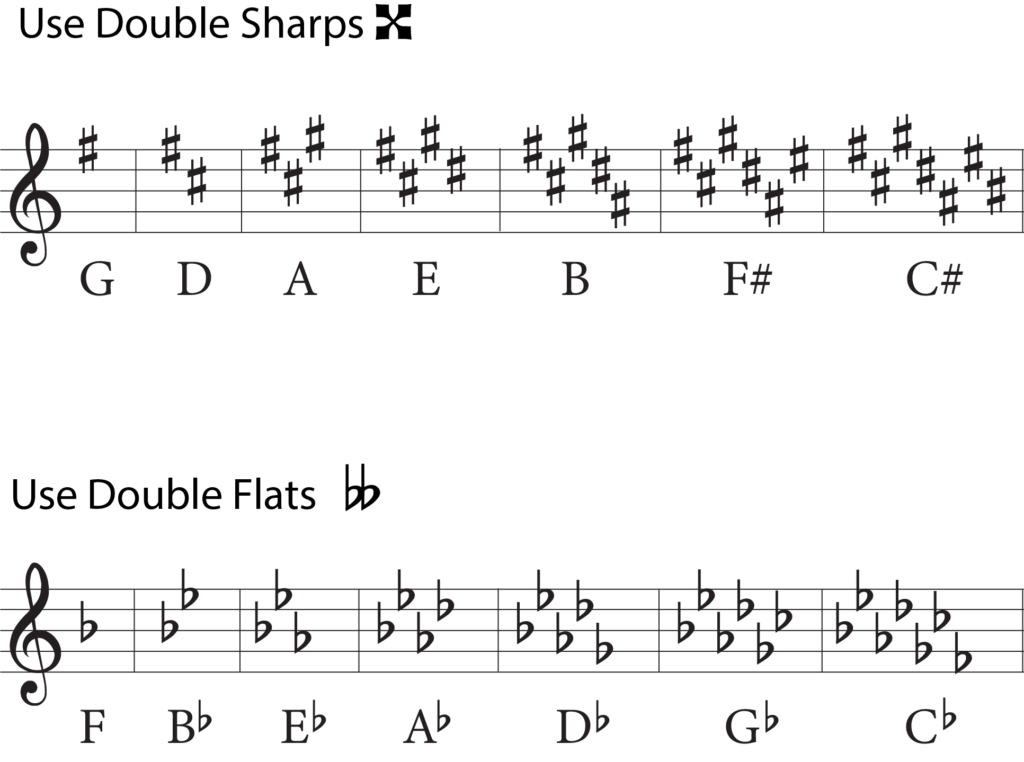In this post we will look at the double flat sign in music. We will explore what they are, how they are used and how we see them in music notation.
What is the Double Flat Sign?
Western music contains 12 different pitches. These twelve pitches can then be repeated over different octaves.
There are seven of these pitches that are considered ‘natural’, these are:
A B C D E F G
The remaining 5 pitches are then either sharp notes or flat notes. However, sharps and flats are not the only accidentals you will see in music. We can also have double flats and double sharps.
In this post we will look at the double flat sign (see below)
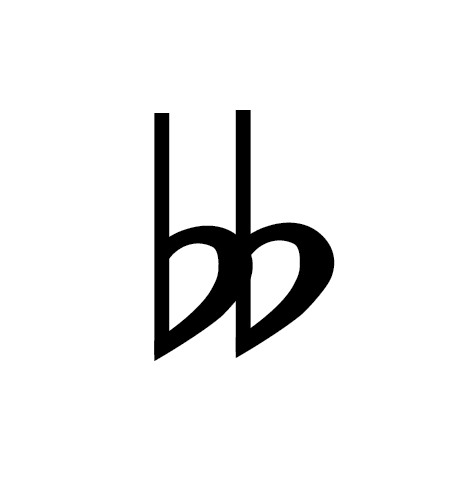
A single flat sign instructs you to lower the note by a half step but the double flat is slightly different. The double flat symbol is the equivalent of two flats. A flat sign lowers a note by one half step, and a double flat sign lowers a note by two half steps (one whole step or a tone).
How does a Double Flat sign In Music work?
Double flat notes are notes that sound two half steps (one whole step) lower than what we usually see on the musical staff.
The notes on the treble staff are:
F A C E in the spaces going from bottom to top.

E G B D F on each line going from bottom to top.

Each of these notes can be altered to become a double flat i.e. two half steps lower. This is very easy to visualize on the piano keyboard. It is easy to think of the white keys as your natural notes.
Look at the note B on the piano keyboard below. For us to turn this into a B double flat we must move down by two half steps. This takes us from the white key to the black key back to a white key.
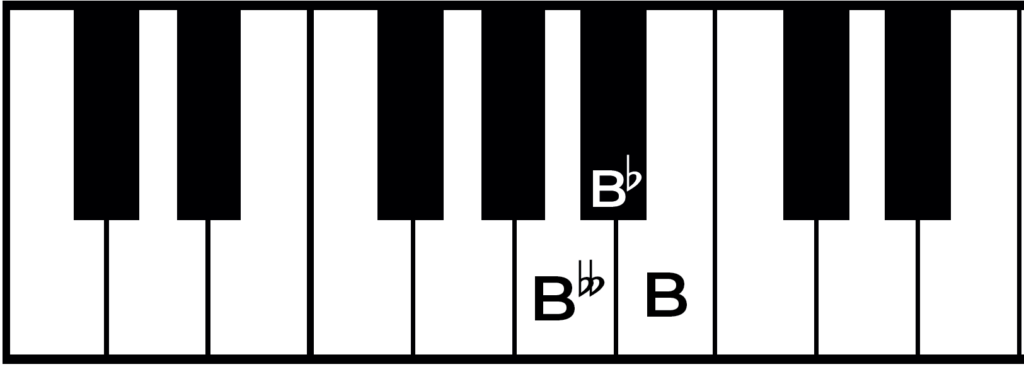
What is the double flat sign?
To indicate that a note should be a double flat note we use a double flat sign. A double flat symbol is simply written with two small letter ‘b’s.
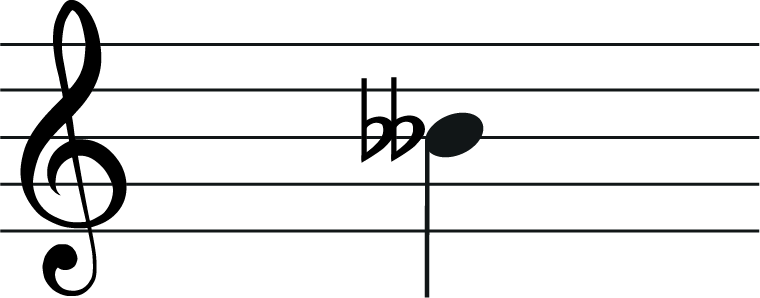
This symbol should be written in front of the notes that you wish to be double flats.
Using key signatures
It is extremely important to note that we do not use double flats or double sharps in a key signature. In a key signature we only see single sharps or single flats.
A flat key will have flats in the key signature and a sharp key will have sharps in the key signature. Remember this is the same for major scales and their relative minor key.
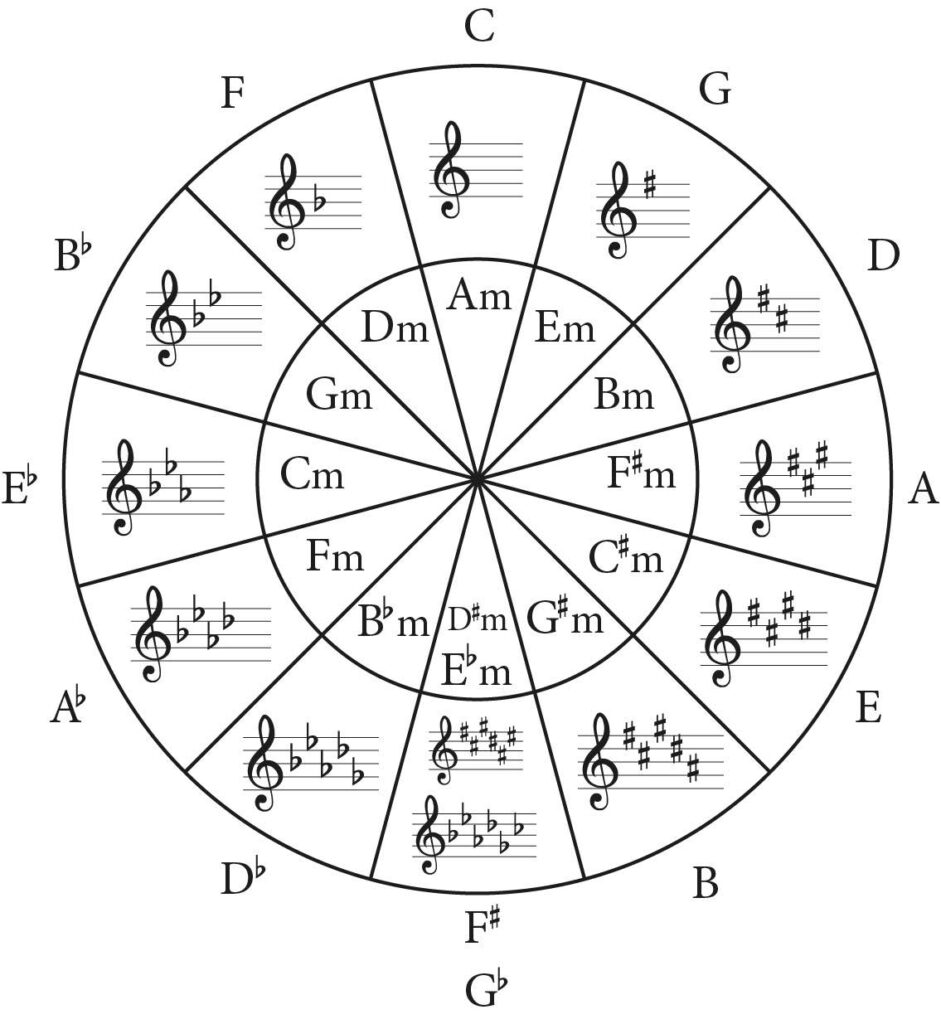
A double flat sign will be used as an accidental. Even if there is a single flat in the key signature you still need to use the double flat sign, if you wish to double flat the note. The double flat symbol alters the flat you have in the key signature.
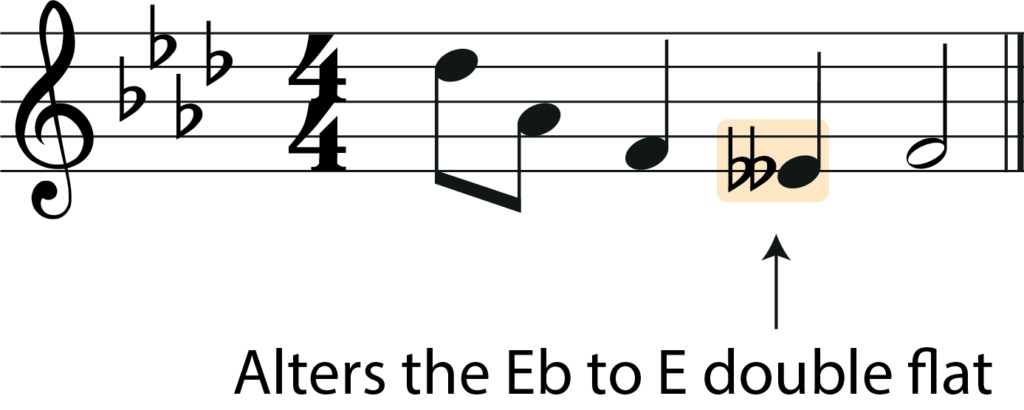
This is the same if you have a sharp key signature. If you want to double sharp a note that is already sharp form the key signature, you still need to write the double sharp sign in front of the note.
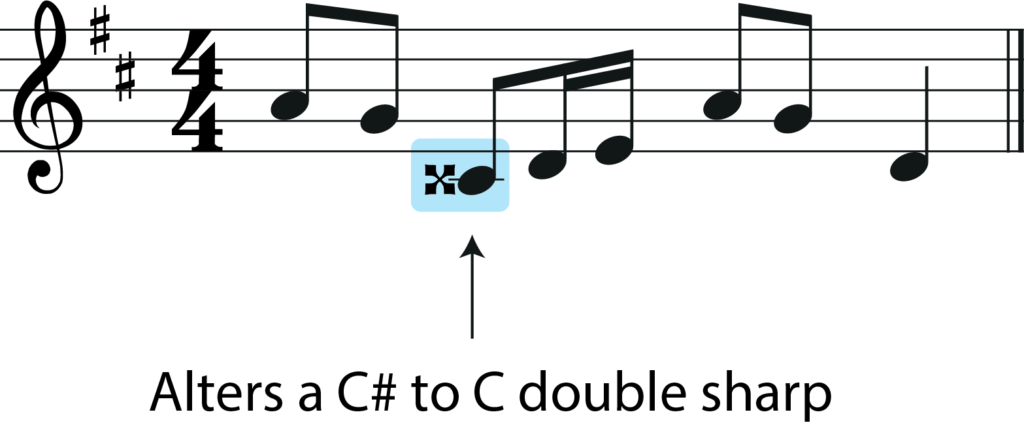
Double accidentals and enharmonic equivalent notes
Double accidentals are extremely important when it comes to writing enharmonic notes.
An enharmonic note is a note that sounds the same as another note but is spelt differently. For example, A double flat is the enharmonic equivalent of the G natural note.
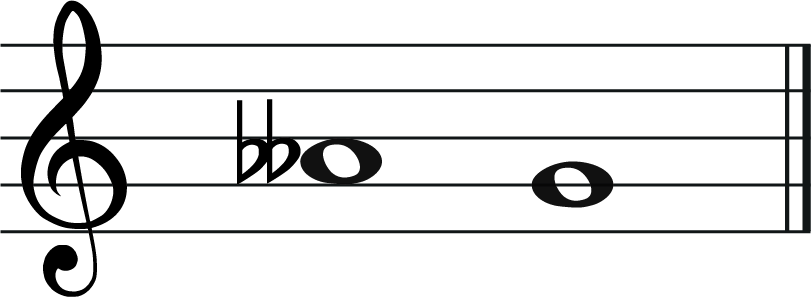
Take a look at the piano keyboard and you can see why these two notes are enharmonic equivalent.
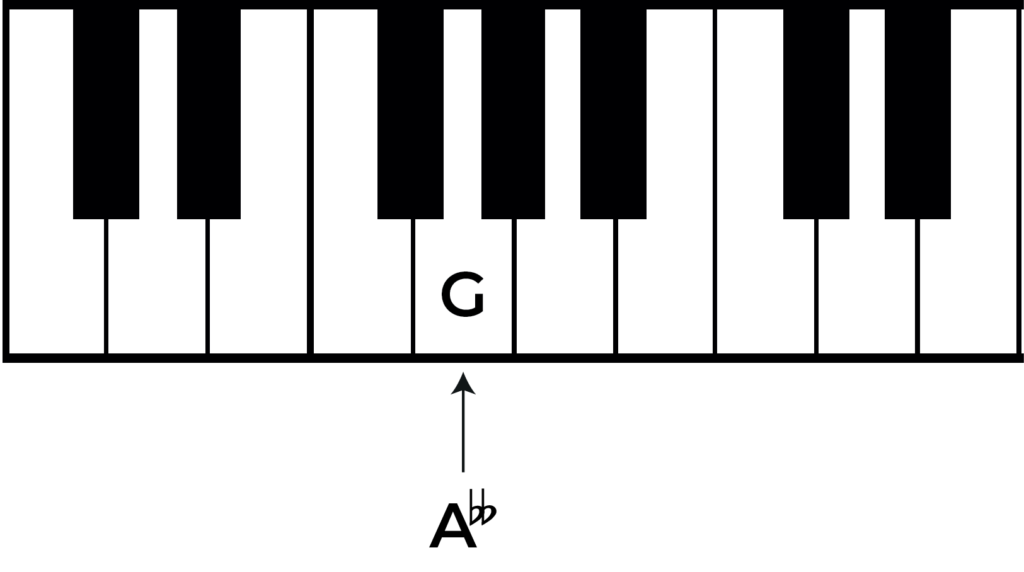
You will use enharmonic notes to make music easier to read, it is important to make sure you look at what key your music is in and this will help you decide what accidental you will need to use.
How to cancel a double flat sign
As with other accidentals, when you place an accidental on a note in a measure, this sign will only last for that one measure. As soon as the bar line appears, the accidental is cancelled.
If you would like the accidental again in the next measure, you will have to write it again.

If you want to cancel a single accidental within a measure, you use a natural sign.
Double flat signs are a little different as there are two circumstances. You can of course use a natural sign to completely cancel the double flat in a measure, but if you would like to return it to a single flat, then you simply write a single flat next to the note and this is sufficient to cancel the double flat sign.
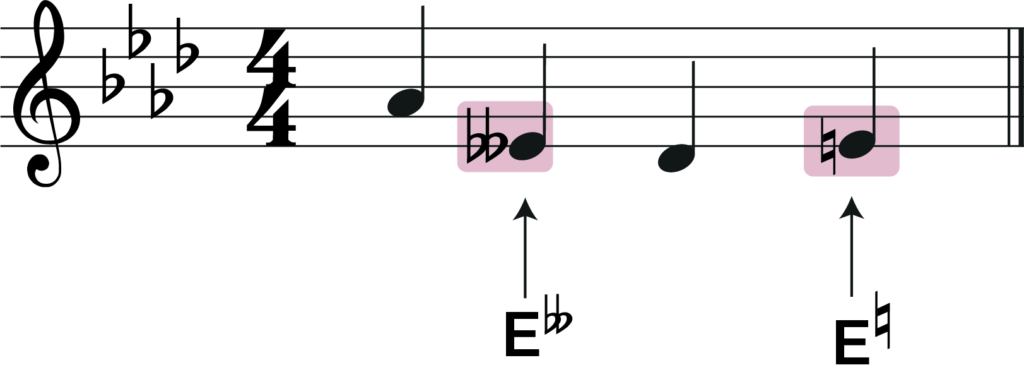
When To double Sharp vs. a double Flat?
As a general rule you will use the double sharp sign when you are in a sharp key and a double flat when in a flat key.
